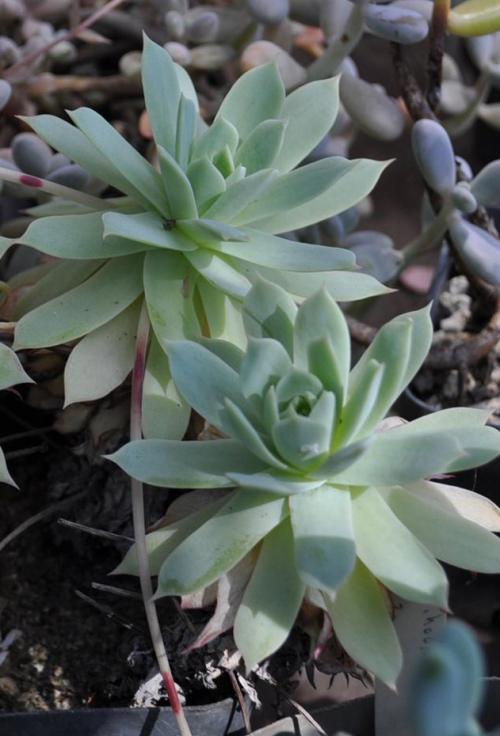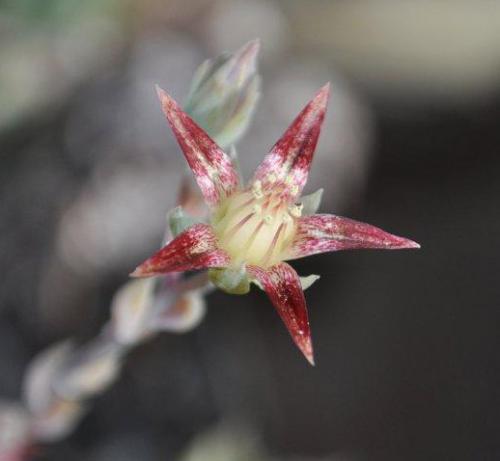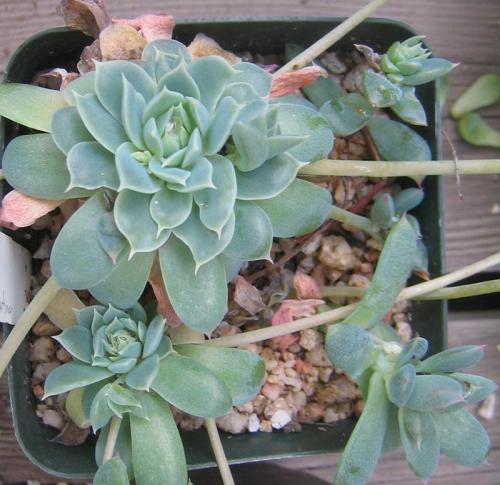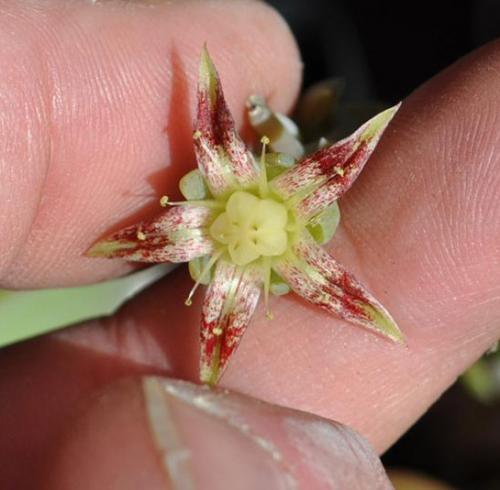MACDOUGALLII Alexander, 1940
Distribution : Mexico (Oaxaca); on somewhat shady rocks, rarely epiphytic, 1200 – 2100 m.
Description (according to J. Thiede in IHSP, 2003) :
Rosette plants; stems short, basally branched and in addition with axillary runners.
Rosette dense, ± mat-forming.
Leaves tongue-shaped, spreading during the growth season, connivent during the dry season, 2,5 – 3, 5 x 0,8 – 1,5 cm, usually ± bright bluish to greenish, apically drawn out into an up to 2 mm long elongate tip.
Inflorescences 5,5 – 7 cm, thyrses ± 1,5 – 3 cm with scorpioid pendant branches with up to 10 flowers in total, pedicels to 2 cm.
Flowers 5-merous, sepals basally united, obovate, acute, 6 – 8 mm, petals ovate-lanceolate, pointed, 7 – 10 mm, lower face green, tube 3 – 4 mm, inside whitish-yellow-green, basally scattered brown blotches and/or stripes, these confluent in the middle and resulting in an almost solid coloration towards the tips, apically yellowish-green, lower face with red stripes near the margins, filaments 5 – 8 mm, greenish-white apically tinged reddish.
Cytology : n = 64 – 66, 192, 244 ± 4, 245 ± 5
The species is geographically isolated within Sect. Graptopetalum, as all other species of the section are located between Nayarit/Durango and Arizona.
Note:
Two somewhat different clones are in cultivation. Plants resemble small echeverias, they produce long stolons with new plantlets and are fine in hanging baskets.
In habitat in Oaxaca, Mexico :
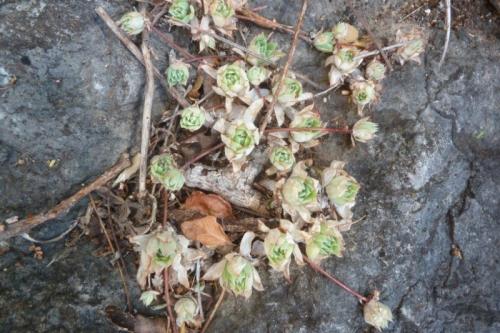
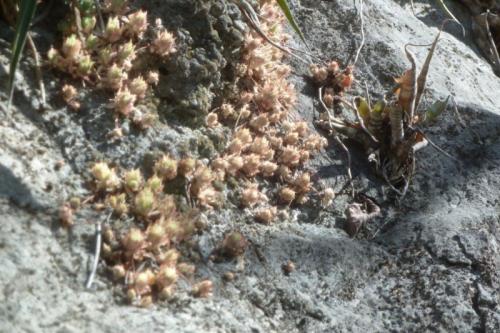
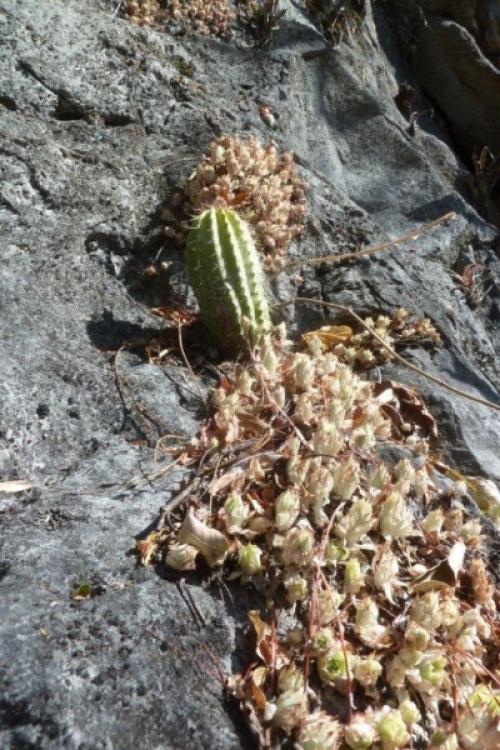
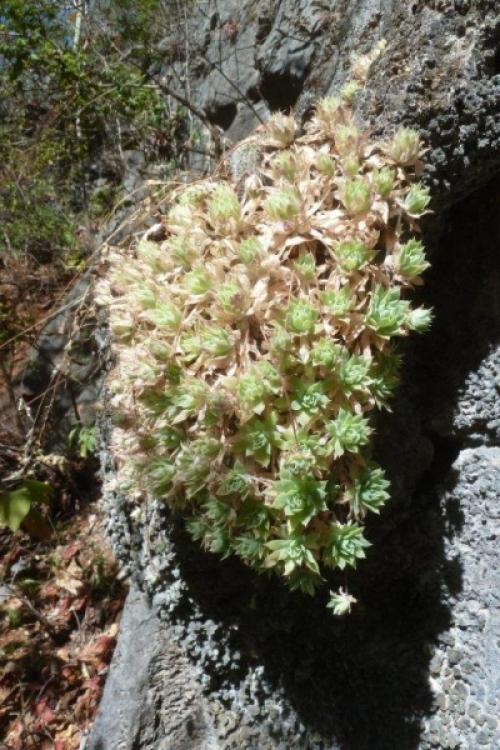
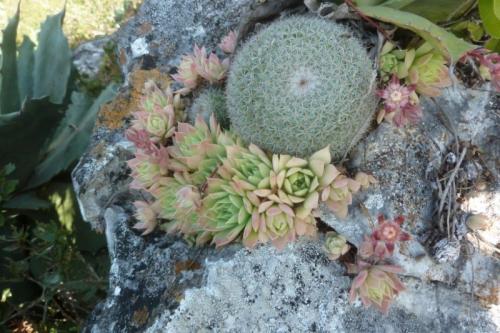
Photos Gerhard Köhres
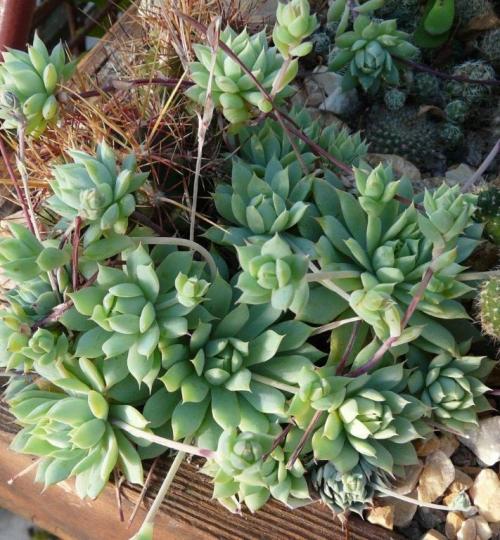
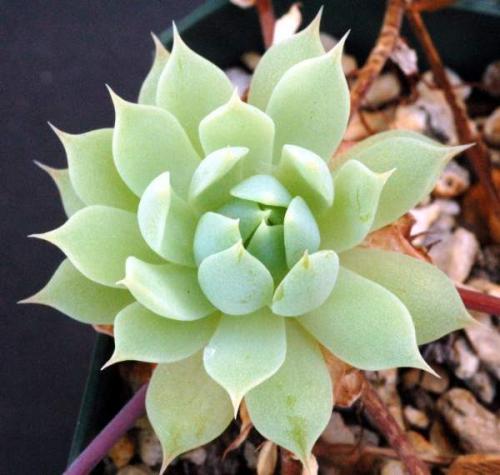
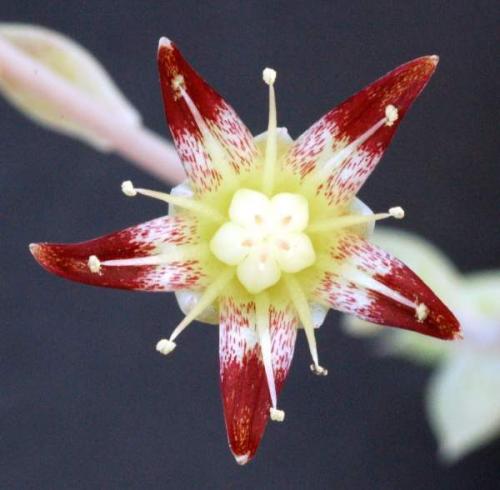
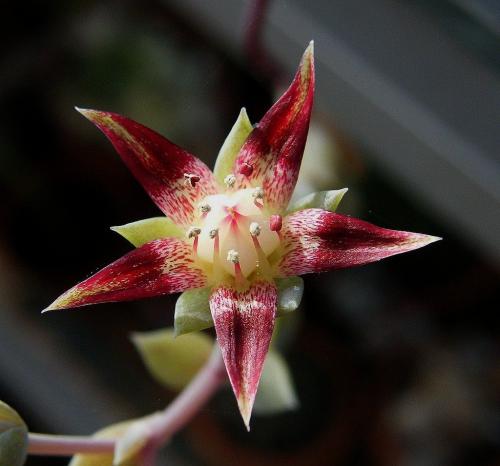
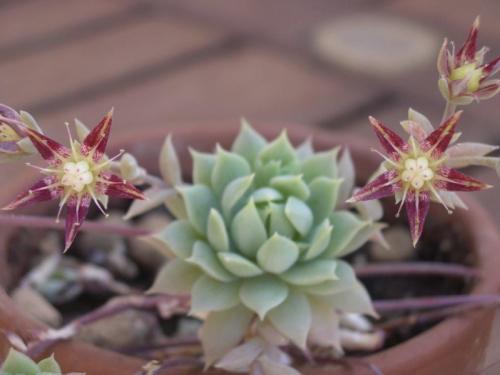
Photo Mateo Lichtenstein
